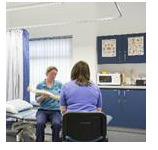Les relations médecin-patient via internet
11/01/2014Making Sense of Sensors: How New Technologies Can Change Patient Care – CHCF.org
11/01/2014Q&A: Patient consent for treatment
MDU adviser Dr Caroline Fryar answers common GP questions on gaining and recording patient consent
GPs can leave themselves vulnerable to criticism if they fail to take proper consent, or fail to properly record the consent process. In order to properly consent to treatment, patients must be given enough information to make an informed choice, so the explanation given to and understood by the patient is crucial.
Here we address some of the common questions GPs ask about obtaining valid consent, providing information about risks and getting consent from patients who lack capacity.
E.g.:
– How can I ensure consent is valid?
The GMC makes it clear in its publication Consent: doctors and patients making decisions together (2008) that it is the responsibility of the doctor undertaking the investigation or providing the treatment to discuss it with the patient. This means explaining to patients in non-technical language the nature, purpose and risks of the proposed procedure. If the treatment is difficult to understand, it may be helpful for you to use drawings, diagrams and models. If necessary, an interpreter should be there to make sure the explanation is given in a language the patient understands.
You may ask patients to sign a consent form for certain procedures such as minor surgery, but this is of secondary importance to the consent discussion, although it may be useful evidence if a complaint or claim arises.
– Do I have to get consent for every procedure?
– At what point should I get consent?
– Who can obtain consent?
– What is the medico-legal definition of consent?
– What risks do you need to warn the patient about?
– How can I help patients to make a decision? Should a GP try to make it easier for patients to make decisions for their care, e.g by using simple language?
– HOw can I asess whether the patient has capacity? …
etc.etc…
See on www.pulsetoday.co.uk




